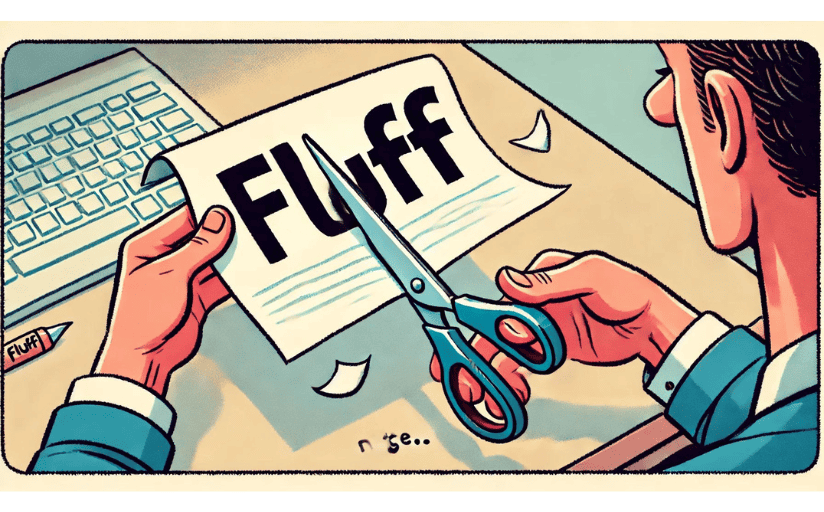If you’re looking to create engaging content, then come closer and let me whisper a secret: cut the fluff. No, I’m not talking about abstaining from that delicious marshmallow spread; I’m not the food police, and I won’t judge you for the goodies you have stashed in your shame drawer if you don’t judge me for what’s in mine. I’m talking about taking out the repetitious, pretentious, and nonessential content that can bring down the quality of your work.
How To Create Engaging Content Every Time
Your goal is to keep your readers hooked from start to finish. But how do you do that? By following a few key principles, creating engaging content every time isn’t that hard.

Repetition Is for Parrots
When writing, don’t repeat yourself. I repeat, don’t repeat yourself. (Look, Ma, I’m clever!) Padding your work with repetitive content will make it seem like you haven’t done your research or have nothing to say. Get to the point, combine clauses when appropriate, and don’t assume that restating something will help clarify a point the reader may not understand. If that’s the case, then rewrite potentially unclear sections so they stand strong on their own.
Examples of Repetition
- Every country has a legal drinking age. Each country follows its own underage drinking laws.
- New chassis trailers are also for sale at our dealership as well.
- When beading, prepare your workstation by laying down a towel or a velvet jewelry pad. One of the main reasons that you want to prepare your workstation with a cloth of some kind is to keep your beads from rolling around.
Wipe Out the Worthless Words
I hate it when I’m watching a movie and the dying victim has five seconds to reveal the killer, but instead she spends that time breathlessly saying, “My love, I need to tell you something important. The killer is—” right before she gives up the ghost and takes the secret to her grave. Nobody likes this (or finds it realistic), so don’t do the equivalent in your writing if you want to create engaging content that readers will enjoy.
How do you know if you’re fluffing up your work? When editing your work, if taking out a sentence or phrase doesn’t alter what you’re trying to say, that probably means the content is unnecessary. Realize that many readers will notice when an article is full of unneeded information, and they likely won’t view it as a reputable source.
Examples of Wordiness
- It is for all intents and purposes a device that easily removes nails from a roof.
- Deforestation is a concern because of the fact that many states don’t require a tree to be planted after one is cut downby a logger in the area.

Thesaurusitis Is a Painful Disease
Some writers have a habit of using the thesaurus too much. While keeping your content fresh is important, make sure that your work doesn’t turn into an SAT vocabulary study guide. Even if you’re writing on scientific programming and algorithm development, keep your content approachable. That isn’t to say that you should dumb down your focus; just don’t create overly complex phrases that could be concisely or clearly written. Remember, one of the easiest ways to lose a reader’s interest is to fail to connect with them.
Examples of Overly Relying on the Thesaurus
- It has been articulated by various and sundry populaces in the sphere of influence that the nihilism of bureaucracy is prosaic.
- The fragmentation of pragmatic theory in society is repugnant and ought to bring to the surface fervid sentiments of trepidation and melancholy.
Create Engaging Content That Resonates
By cutting the fluff in your writing, you not only create engaging content that you can be proud of, but you also provide value to your readers. This makes your content more impactful and enjoyable to read, which means they’ll be more likely to share it. Do you struggle with fluffy writing or have helpful tips on how to avoid it? Share your thoughts in the comments below!


Leave a Reply